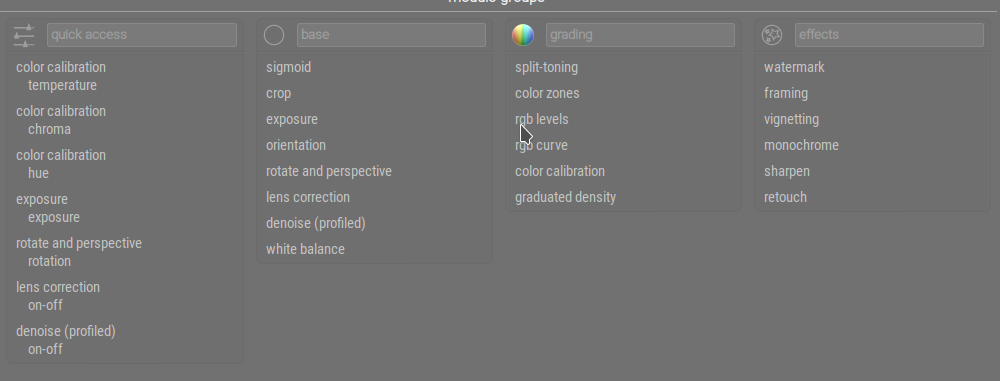Learning a new program will always take some time. You’re not going to jump into C1 from rt/dt and be immediately proficient. Digital manipulation tools are inhernetly complex, as the problem is complex. I spend hundreds of hours learning photoshop’s many techniques and getting acquainted with all the various tools. If you are a frequenter of any other photography forums, you’ll find the same complaint about RawTherapee, ironically. To quote some dpreview users: “A GUI that only a PhD could love.”
If you start with darktable by trying to fiddle every knob and slider of every module, sure, you’ll be overwhelmed. However, the project makes recommendations of which modules to use, but we leave it up to the user to decide what works for them. If you spend a tiny amount of time with the manual and a youtube video, then you’d probably quickly learn that you don’t need to diddle every knob. For me, that is what is most disappointing about Andy’s initial post-- you’d think a person who makes instructional videos for people that go fairly in depth would be acquainted with doing a little bit of research, reading the manual, and experimenting a bit before drawing such rash conclusions. This discounts the fact that there are numerous incorrect statements in first post (as he is figuring out now by asking questions).
I’d say that with the scene referred workflow, the modules are less intertwined than they’ve ever been. These set of modules operate on specific parts of the image to give you precise control, and they try very hard not to step on the toes of other modules. If your perception is that it is a dense impenetrable mess and you don’t make any effort to counter that perception, then it’ll never change.
If you want to evaluate them, then yes, it can take some time. But, again, the project recommends modules to use and where to spend your time: darktable 4.2 user manual - process
I’d suggest you do not speak on something you clearly have zero understanding of. Again, you’ve absolutely failed at doing any type of research, the reasons why he forked are clear and you’ve completely whiffed on the reason.
We don’t need a poll, it is a commitment that the project made to its users.
Further, you don’t even see all the modules on first start, you see a select subset. The project is continuing to refine this subset, and the grouping will be updated for 4.4
I wonder in general: how long did it take you to learn RawTherapee? Was it the first day you installed it? How deep do you really go with the modules? How about the more technical modules like Wavelets? Isn’t a lot of what you’ve leveled here apply equally to RawTherapee, save the fact that you’ve put in the time to learn RawTherapee?


